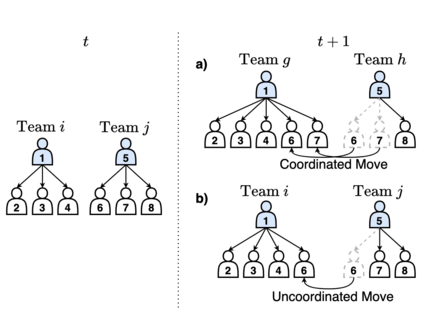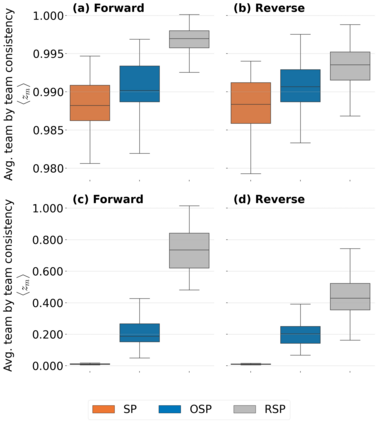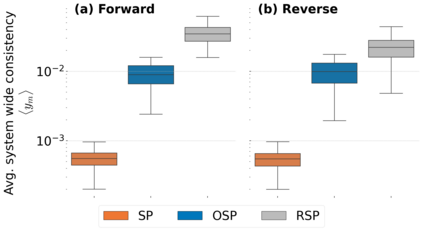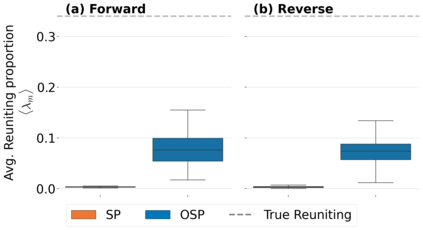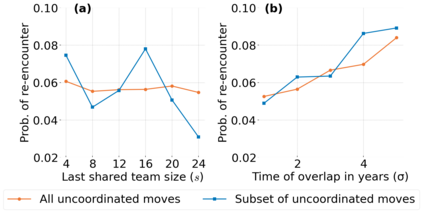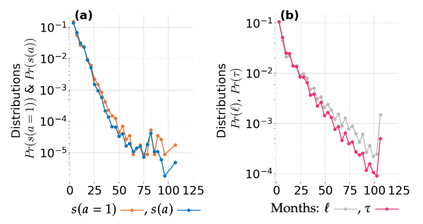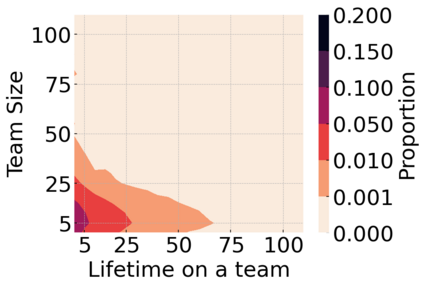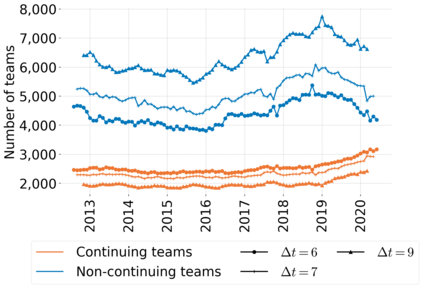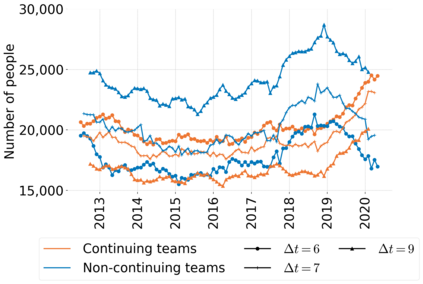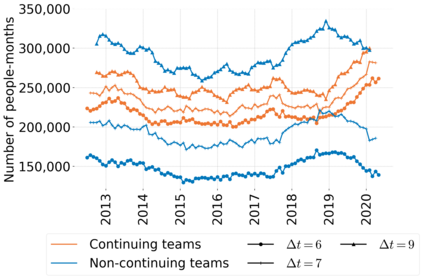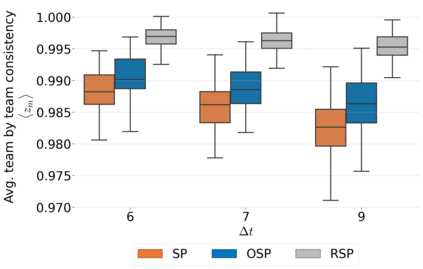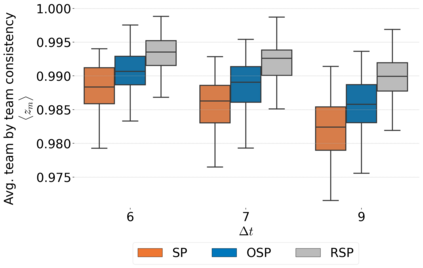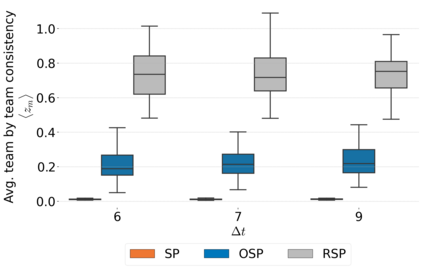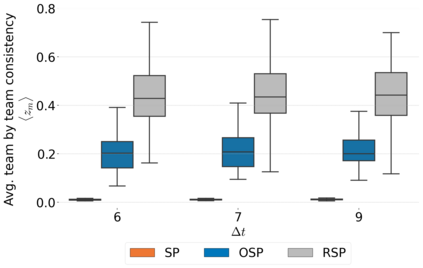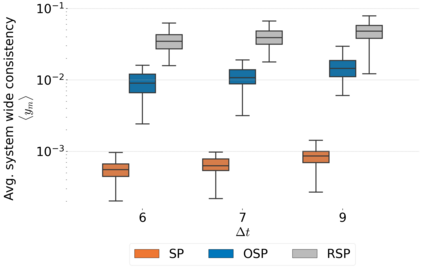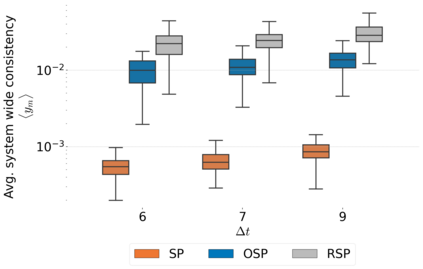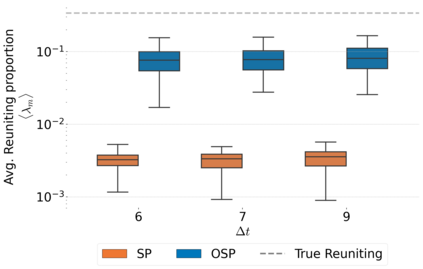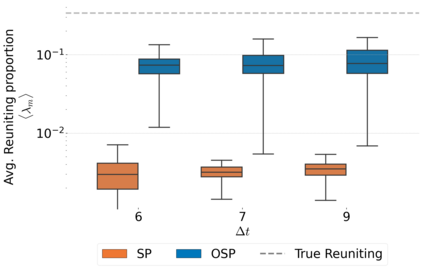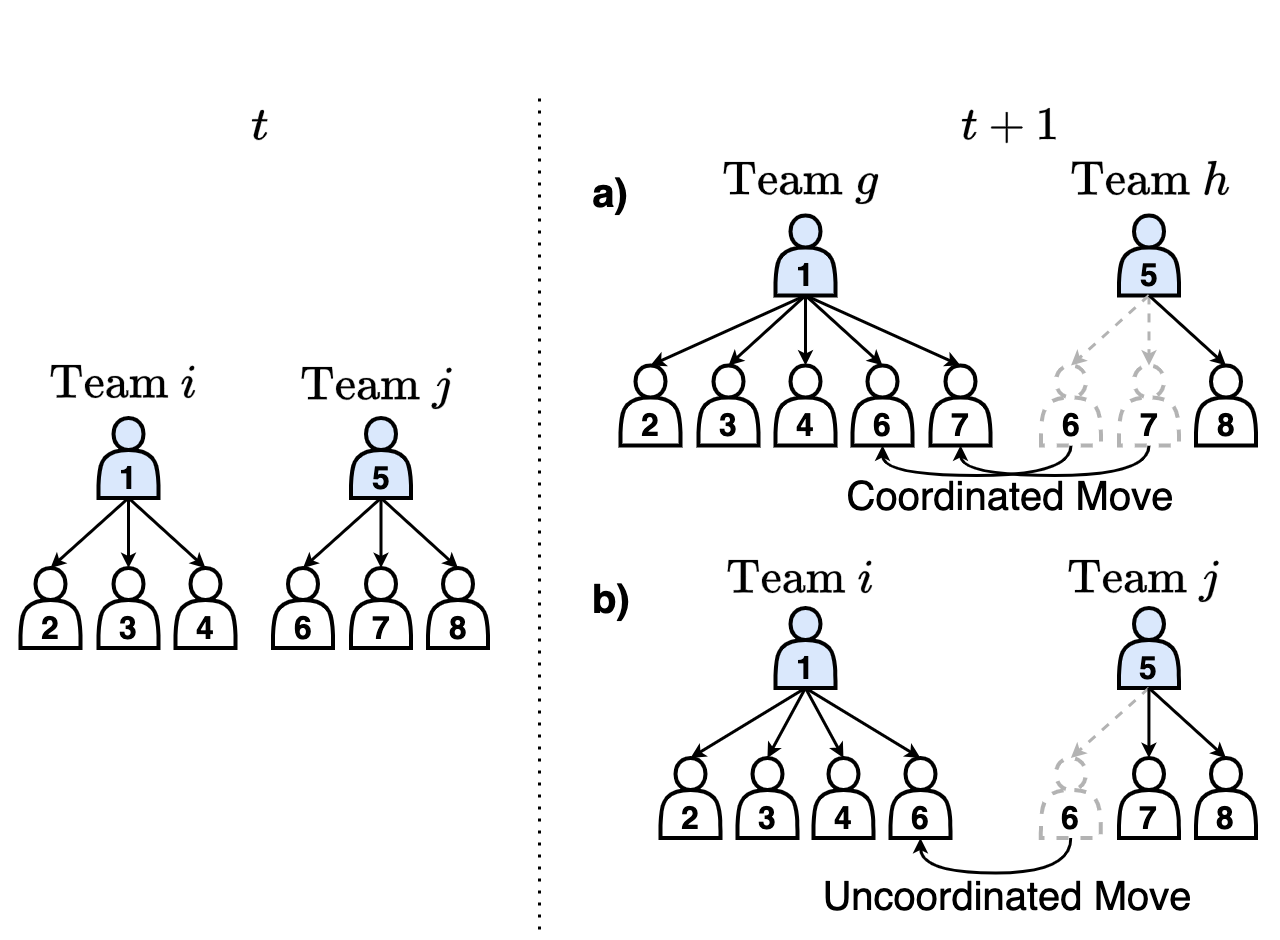The internal structures of large organizations determine much of what occurs inside including the way in which tasks are performed, the workers that perform them, and the mobility of those workers within the organization. However, regarding this latter process, most of the theoretical and modeling approaches used to understand organizational worker mobility are highly stylized, using idealizations such as structureless organizations, indistinguishable workers, and a lack of social bonding of the workers. In this article, aided by a decade of precise, temporally resolved data of a large US government organization, we introduce a new model to describe organizations as composites of teams within which individuals perform specific tasks and where social connections develop. By tracking the personnel composition of organizational teams, we find that workers that change jobs are highly influenced by preferring to reunite with past co-workers. In this organization, 34\% of all moves lead to worker reunions, a percentage well-above expectation. We find that the greater the time workers spend together or the smaller the team they share both increase their likelihood to reunite, supporting the notion of increased familiarity and trust behind such reunions and the dominant role of social capital in the evolution of large organizations.
翻译:暂无翻译

